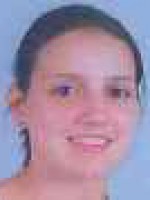resumo
Poly (L-lactic acid) (PLLA) is a biodegradable and biocompatible polymer that has been put forward as a promising material for therapeutic approaches aiming to restore neuronal function. The topographic cues present in PLLA-based scaffolds, defined by the technique used in their preparation, have been shown to play a role on the cellular behavior of adherent cells. Even though this interaction has been shown to influence the regenerative output of the scaffold, there is a lack of studies addressing this response at the proteomic level. Hence, this work focuses on the effect of electrospun PLLA-based nanofibers on the proteome, cellular processes and signaling pathways of SH-SY5Y neuroblastoma cells. It also further explores how these molecular mediators might influence cell proliferation and differentiation upon in vitro culture. For that, mass spectrometry followed by bioinformatics analysis was firstly performed and further complemented with Western blot, cell viability and imaging assays. Results show that PLLA nanofibers differentially activate and inhibit specific cellular functions and signaling pathways related to cell division, apoptosis, actin remodeling, among others. These ultimately block cellular proliferation and induce morphological rearrangements through cytoskeleton remodeling, adaptations that turn cells more prone to differentiate. In synthesis, PLLA nanofibers shift the SH-SY5Y cells proteome towards a state more responsive to differentiation-inductive cues such as the retinoic acid. Unveiling cells responses to nanomaterials is an important step to increase the tools available for their manipulation and potentiate their use in neural tissue engineering. Further studies should be performed to compare the effects of other topographic cues on cellular behavior.
palavras-chave
NEURITE OUTGROWTH; STEM-CELLS; IN-VITRO; PIEZOELECTRIC SCAFFOLDS; EXTRACELLULAR-MATRIX; DNA-REPLICATION; BREAST-CANCER; GROWTH-FACTOR; DIFFERENTIATION; PROTEIN
categoria
Biochemistry & Molecular Biology
autores
Marote, A; Barroca, N; Vitorino, R; Silva, RM; Fernandes, MHV; Vilarinho, PM; Silva, OABDE; Vieira, SI
nossos autores
Grupos
G2 - Materiais Fotónicos, Eletrónicos e Magnéticos
G3 - Materiais Eletroquímicos, Interfaces e Revestimentos
G5 - Materiais Biomiméticos, Biológicos e Vivos
agradecimentos
This work was supported by Fundacao para a Ciencia e a Tecnologia (FCT), Fundo Europeu de Desenvolvimento Regional Portugal (FEDER), QREN-COMPETE Portugal: project PTDC/SAU-NMC/111980/2009, scholarship FRH/BD/47331/2008, Institute for Biomedicine iBiMED UID/BIM/04501/2013, Centre for Cell Biology CBC Pest-OE/SAU/UI0482/2014, Associate Laboratory CICECO (PEst-C/CTM/LA0011/2013), QOPNA research unit (PEst-C/QUI/UI0062/2013), and RNEM (Portuguese Mass Spectrometry Network).





